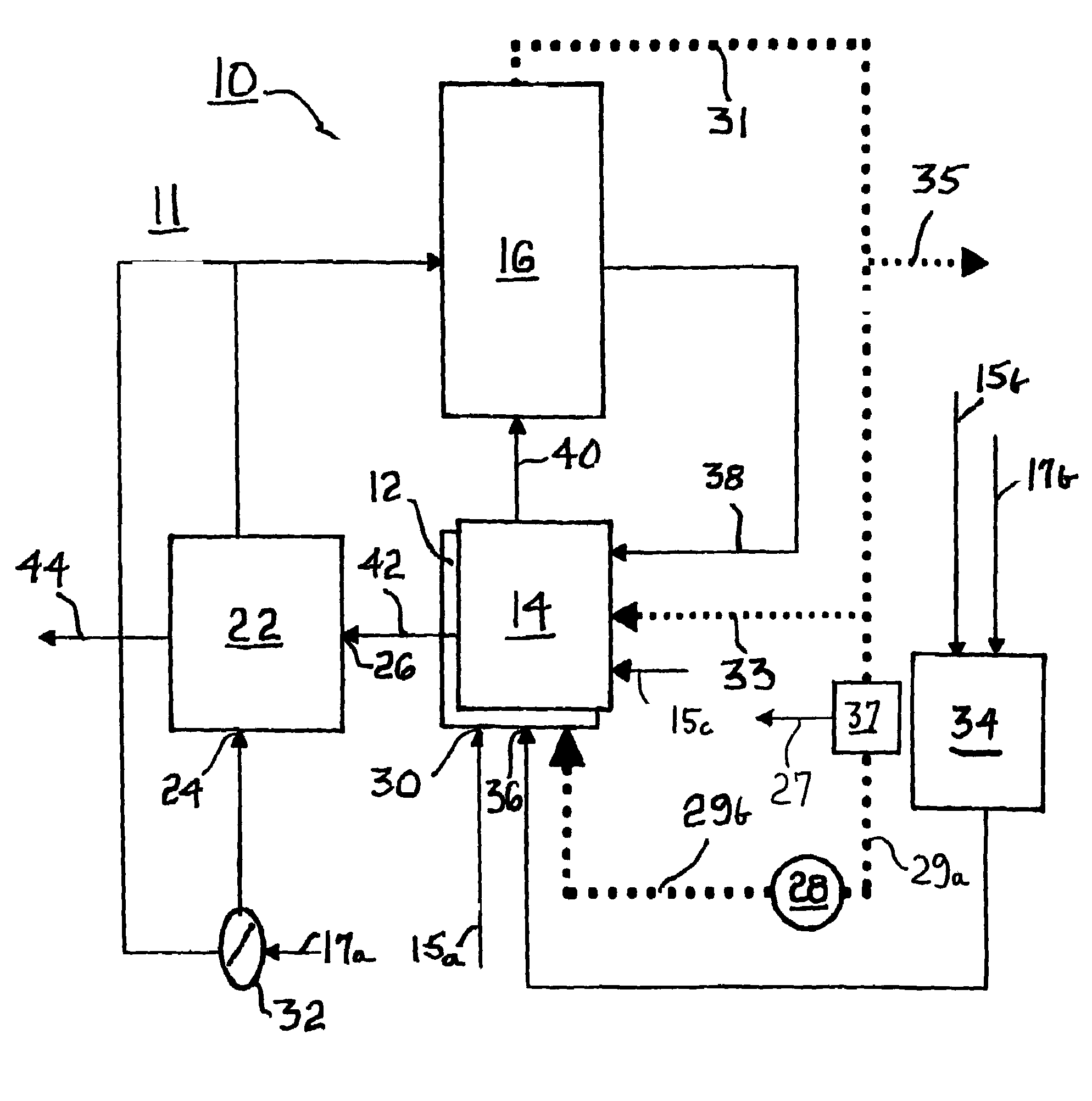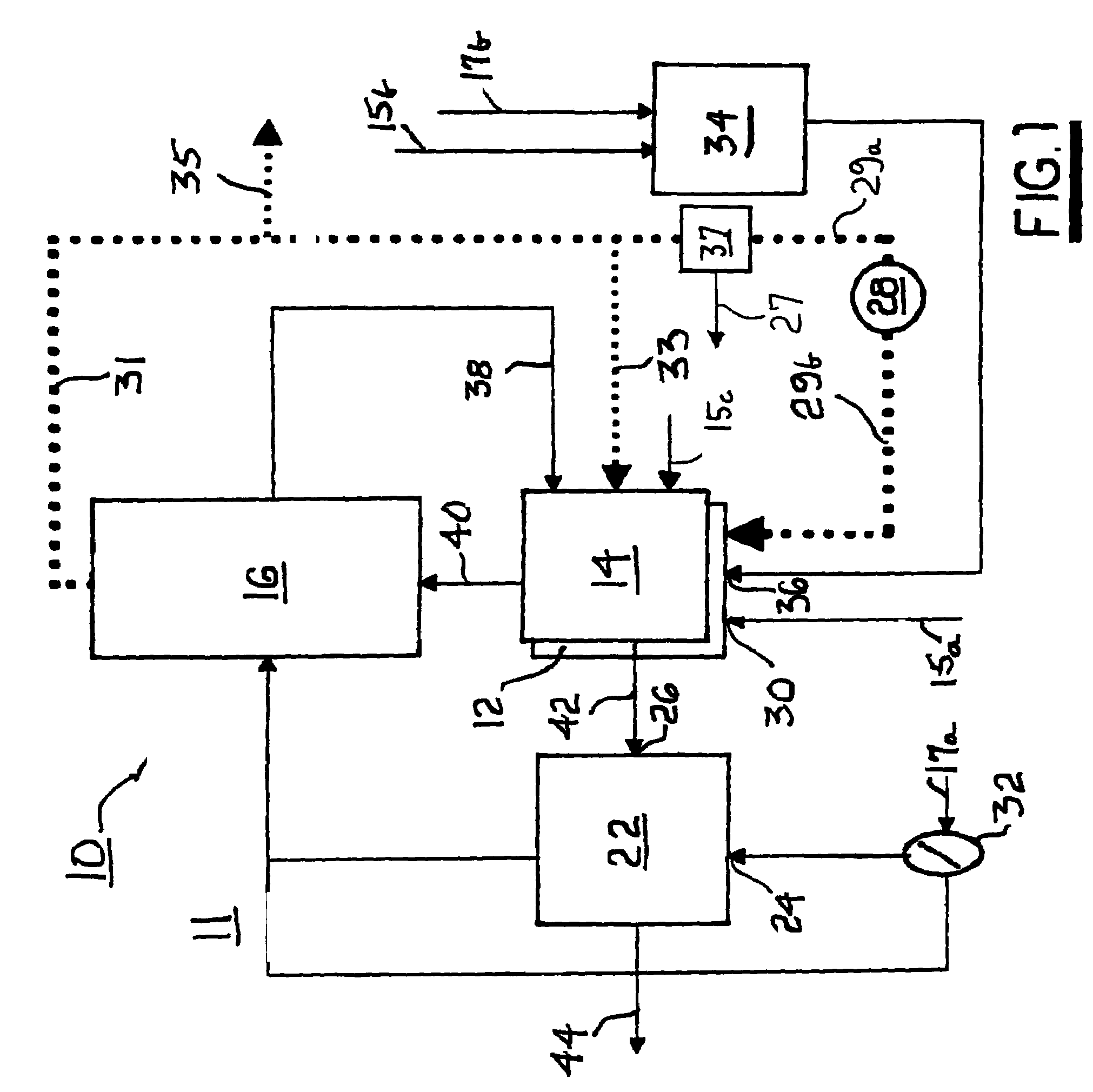Apparatus and method for operation of a high temperature fuel cell system using recycled anode exhaust
a fuel cell and anode exhaust technology, applied in the field of high-temperature fuel cells, to achieve the effect of improving efficiency and improving power density of fuel cell stacks
- Summary
- Abstract
- Description
- Claims
- Application Information
AI Technical Summary
Benefits of technology
Problems solved by technology
Method used
Image
Examples
Embodiment Construction
[0014]Referring to FIG. 1, a high temperature fuel cell system 10 as may be suited to use as an auxiliary power unit (APU) in a vehicle 11 includes components known in the art of solid-oxide or molten carbonate fuel cell systems. FIG. 1 is not a comprehensive diagram of all components required for operation but includes only those components novelly formed and / or arranged in accordance with the apparatus and method of the invention. Missing components will be readily inferred by those of ordinary skill in the art.
[0015]A hydrocarbon catalytic reformer 12 includes a heat exchanger / combustor 14, preferably formed integrally therewith. A fuel cell stack 16 comprises preferably a plurality of individual fuel cell elements connected electrically in series as is known in the art. Stack 16 includes passageways for passage of reformate across the anode surfaces of the stack and passageways for passage of air across the cathode surfaces of the stack, as is well known in the prior art. A cath...
PUM
| Property | Measurement | Unit |
|---|---|---|
| heat | aaaaa | aaaaa |
| temperature | aaaaa | aaaaa |
| electric current | aaaaa | aaaaa |
Abstract
Description
Claims
Application Information
 Login to View More
Login to View More - R&D
- Intellectual Property
- Life Sciences
- Materials
- Tech Scout
- Unparalleled Data Quality
- Higher Quality Content
- 60% Fewer Hallucinations
Browse by: Latest US Patents, China's latest patents, Technical Efficacy Thesaurus, Application Domain, Technology Topic, Popular Technical Reports.
© 2025 PatSnap. All rights reserved.Legal|Privacy policy|Modern Slavery Act Transparency Statement|Sitemap|About US| Contact US: help@patsnap.com


